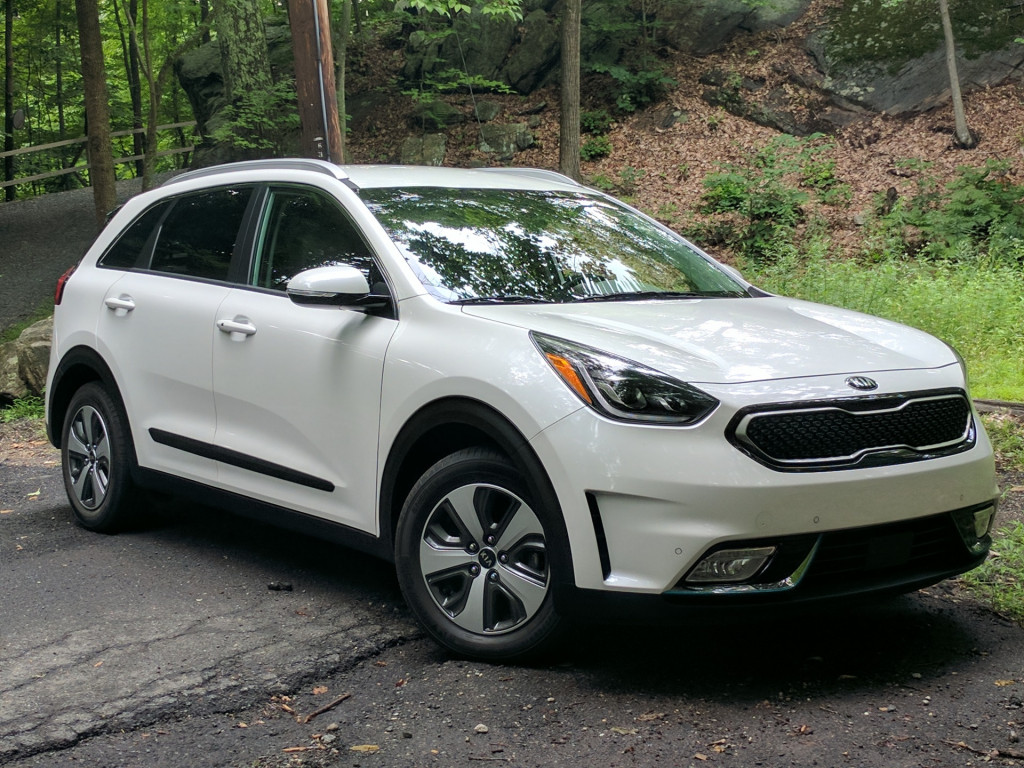For an automaker that’s pitching itself toward the fun side of the Hyundai Motor Group, the tone for the automaker’s sizable electric push soon sounds altogether like pants.
“It’s all about what fits,” said Michael Winkler, director of powertrains for Kia in Europe.
By the end of next year, Kia will offer in the U.S. all-electric versions of both the boxy Soul and the hatchback Niro.
Neither have been officially confirmed by the automaker: the next-gen Soul is still in development, and the Niro EV just made its debut for Europe with no word for a version in the U.S. Confirmation of both for buyers in the U.S. is just a formality.
DON'T MISS: Kia Niro Electric range rated at 301-miles in Europe
The specs for the Niro EV are all but set for the U.S.: 64-kwh battery, 201 horsepower, more than 240 miles of range—if not more. Although what the Niro rides atop is shared with the Hyundai Ioniq Electric, it borrows most of its powertrain components, including battery and motor, from the Kona Electric crossover.
When the Soul EV arrives, it’s likely to share its fundamental layout with the Kona Electric, although its powertrain configuration is less clear.

2020 Kia Niro EV, 2018 Paris auto show
It’s unlikely to get the same 64-kwh battery as the Niro EV, and instead may receive a 39-kwh battery from the European and Korean version of the Niro. If the Soul EV is a funky, urban green car, the Niro EV will be the big, electric family car.
Kia seems content to offer two electric vehicles in their portfolio—at least two—that fit different sizes.
The Niro EV and Ioniq Electric are related, both built on the same corporate platform, and the Ioniq’s paltry 124-mile range could be collaterally improved by the mere existence of the Niro EV. (The Ioniq’s pack is merely 29 kwh and upgrades to the 39-kwh pack, at the very least, does seem like a natural fit.)
READ NEXT: 2018 Kia Niro PHEV gas mileage review: outrunning expectations
Kia hasn’t yet developed its own electric powertrain separate from Hyundai, and it’s unlikely that the two automakers will keep anything from each other anytime soon. Batteries, which are sourced from LG Chem, likely will be shared between the two makes, and the models share similar drive motors.
For now, engineers consider electrified vehicles to be one line of a multifaceted approach to propulsion. Gas, diesel, 48-volt mild hybrid, hybrid, plug-in hybrid, EV, and fuel-cell powertrains are all on Kia’s menu around the world.
“It’s just a question of where the products will go,” said Winkler.
EV sales percentages are single-digit for nearly all markets. In the U.S. it’s around 1 percent and in France it’s just about 2 percent—although there are anomalies such as Norway, where EV sales add up to more than a third of the new-car market. Friendly regulations toward electrified powertrains (and unfriendly policies for diesel) may vault EV demand in the short term to keep Kia scrambling to satisfy the rush.

2018 Kia Niro Plug-in Hybrid
Winkel is eager to temper that kind of enthusiasm with the reality that EVs may not be suited for every application. Internal combustion may be a better fit for bigger vehicles meant to go long distances for now. EVs may be best suited for city dwellers with sufficient access to charging stations, plug-in hybrids if they don’t. Diesel still figures heavily into the plans for now, although not in the U.S.
Europe and America seem ripe for multiple electric models from the same automaker, and it seems fairly certain to predict a rising demand.
“All I know about forecasting is, it will be wrong,” Winkler said.













